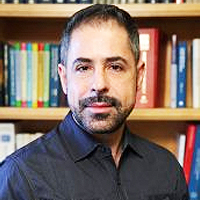Tinnitus: Diagnosis and treatment options
Published on: 31st August, 2017
OCLC Number/Unique Identifier: 7317598632
Tinnitus-derived from the Latin “tinnire” meaning “to ring” is a perceived ringing, buzzing, or hissing in the ear(s) or around the head-which has multiple etiologies and is sometimes idiopathic. As of 2009 in the United States, approximately 50 million Americans were affected for six months or greater, while a United Kingdom study in 2000 reported a 10% prevalence in the adult population [1]. Tinnitus may vary widely with regard to pitch, loudness, description of sound, special localization, and temporal pattern [2]. Most often, tinnitus is associated with other aural symptoms, such as hearing loss and hyperacusis [3]. Tinnitus may result in sleep disturbances, work impairments, and distress. The severity varies within this cohort of chronic sufferers, with some unable to fulfill daily activities. Though tinnitus is more likely to affect adults and the incidence increases with age, children can experience tinnitus as well [4]. Males are more likely to suffer as are individuals who smoke [5].
Changes in the frequency and intensity of Tinnitus using the Suppressive Noise Spectrum
Published on: 21st July, 2017
OCLC Number/Unique Identifier: 7325433767
Objective:To report findings of improvement in patient tinnitus intensity and changes in frequency using a novel suppressive noise spectrum.
Design: Single-subject; each subject served as his or her own control. Each patient received treatment, and changes were measured over time.
Setting: Tertiary referral via university otolaryngology and hospital audiology as well as audiology clinics in the region.
Patients: Fifteen tinnitus ears in 8 patients.
Interventions: Therapeutic and rehabilitative.
Main Outcome Measures:: Tinnitus frequency, tinnitus intensity, and tinnitus questionnaire.
Results (Findings): After 3 months of exposure to the customized suppressive noise spectrum therapy, patients showed a shift in tinnitus frequency in addition to a significant decrease in tinnitus intensity from the pre-treatment to post-treatment condition (p<0.05). Typically, improvement was gradual based on comparing 3 sets of data collected at baseline, 1.5 months and 3 months.
Conclusion: Using suppression in tinnitus is novel. Based on our findings, using a customized suppressive noise spectrum is effective in shifting the frequency, reducing the intensity of subjective tonal tinnitus, and improving the handicap based on THQ test. From this seminal report, factors related to maximizing its effectiveness (e.g., length of listening time, level of hearing loss, and application for alternative tinnitus types) may be considered for future research.
Primary Diffuse Leptomeningeal Melanocytosis: A Rare and Challenging Diagnosis
Published on: 17th April, 2024
Primary melanocytic neoplasms of the central nervous system are rare entities and can present in different clinical forms with mild and non-specific symptoms (such as headache and tinnitus) to severe and limiting symptoms (focal deficits and intracranial hypertension), mimicking the most diverse pathologies. In addition to the peculiar changes in imaging tests, diagnosis is always a challenge given the multitude of possible differential diagnoses, including aseptic meningitis. Given this, we bring here the case of a 59-year-old patient who attended care due to headache and vertigo followed by involvement of the cranial nerves and spinal cord, corroborated by physical examination and imaging study suggesting diffuse involvement of the meninges, which was subsequently confirmed by anatomopathological examination as a primary melanocytic neoplasm of the central nervous system but ended up dying due to complications resulting from late diagnosis. The objective of this work is to raise awareness about the possibility of this pathology as a differential diagnosis in these cases where there are often frustrating clinical manifestations but with changes in imaging tests, to enable an early diagnosis and consequently the possibility of a better therapeutic result, in addition to a brief review of the propaedeutic findings of this pathology.
















